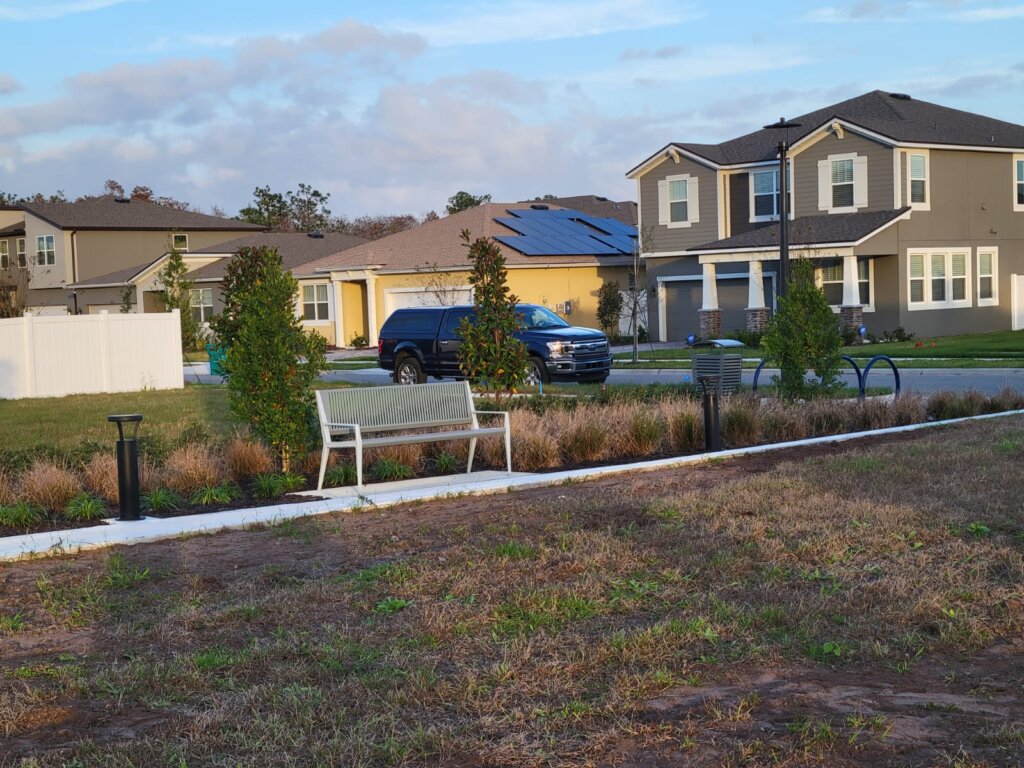When comparing solar vs traditional lighting, cities and HOAs are looking for solutions that balance cost, performance, and long-term reliability.
What’s the Difference Between Solar and Traditional Lighting?
When planning a new public lighting project, many municipalities ask:
“Should we go with solar lighting or stay with traditional wired systems?”
Both options can serve different needs, but more and more cities are switching to solar lighting for public spaces due to long-term savings and flexibility. This guide breaks down the differences so you can make the most informed decision for your project.
Traditional Lighting: Pros and Cons Compared to Solar
Benefits:
- Consistent power supply from the electrical grid
- Familiar maintenance routines for city crews
- Works well in dense urban settings with existing infrastructure
Drawbacks:
- High installation costs (especially trenching and cabling)
- Ongoing electricity bills
- Vulnerable to power outages
- Not ideal for remote or hard-to-reach areas
Solar Lighting: Pros and Cons
Benefits:
- No electricity costs, runs completely off-grid
- Quick and easy installation, no trenching needed
- Operates during grid outages, great for storm-prone areas
- Eco-friendly, supports climate and sustainability goals
- Low maintenance, fewer moving parts, long battery life
Considerations:
- Higher upfront cost per fixture
- Dependent on sunlight, requires proper planning
- Needs good system design (battery size, light placement, etc.)
Total Cost Comparison: Solar vs. Traditional
| Factor | Traditional Lighting | Solar Lighting |
|---|---|---|
| Installation | High (trenching) | Low (no trenching) |
| Operating Costs | Monthly utility bills | $0 energy cost |
| Maintenance | Frequent | Minimal |
| Outage Resilience | Grid dependent | Independent |
| Ideal Use Cases | Urban areas | Parks, trails, remote sites |
Over time, solar lighting can offer a better ROI, especially in areas without existing power lines.
Pro Tip
Always ask for a long-term cost analysis. Traditional lighting may look cheaper at first, but solar systems often break even within 3 to 5 years and save thousands over their lifetime.
Why Cities and HOAs Work with SolarPath
At SolarPath, we help municipalities and homeowner associations design, install, and maintain custom solar lighting systems.
We specialize in:
- Cost-effective off-grid lighting for public spaces
- Photometric designs for safe and even coverage
- Durable, weather-resistant equipment
- Support for grant funding and phased implementation
Whether you’re lighting a community park, trail, pathway, or parking area, our team can build a solution that saves money and looks great.
Ready to Compare Costs for Your Project?
Let us prepare a side-by-side lighting plan that compares solar and traditional options for your exact site.
👉 Request Your Free Cost Comparison Plan
📞 Speak with a SolarPath Lighting Expert
Frequently Asked Questions
Q1: Is solar lighting more expensive than traditional lighting?
Upfront costs can be higher, but solar typically saves money over time with no electric bills and lower maintenance.
Q2: Can solar lights handle cloudy weather or long winters?
Yes, with proper system design (larger batteries, efficient LEDs), solar lights can operate reliably year-round.
Q3: Do solar lights require permits or inspections like wired systems?
Usually less permitting is required, since they’re off-grid. We can guide you through any local requirements.
Q4: Can we combine solar and traditional lighting in one project?
Absolutely. Many cities use a hybrid approach, using solar for remote areas and traditional lighting where infrastructure already exists.
Want to explore more solar lighting guides? Check out our article on:
[What Is the Best Solar Lighting for City Parks?]

